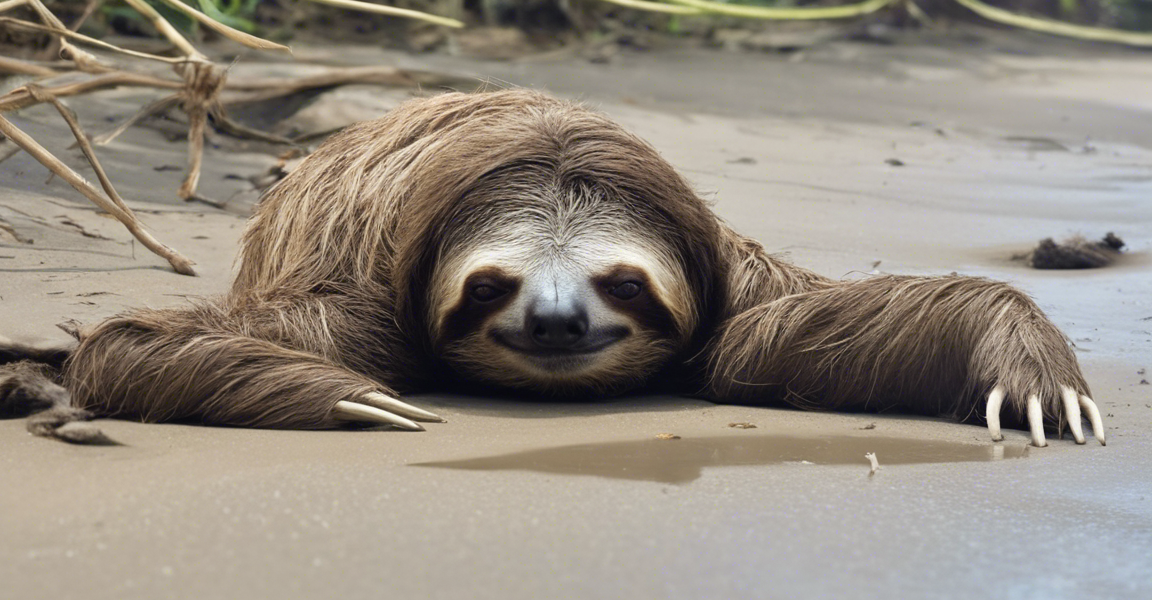We all know sloths as slow-moving creatures that spend most of their time hanging out in trees, munching on leaves, and taking leisurely naps. But what happens when a sloth finds itself stranded or in a challenging situation? Despite their reputation for being somewhat helpless, sloths are surprisingly resilient animals with unique adaptations that help them survive even the toughest of circumstances. In this article, we will explore the incredible abilities of sloths to overcome challenges and thrive in the wild.
Adaptations for Survival
Sloths may not be the most agile or speedy animals, but they have evolved a range of unique adaptations that help them survive in their natural habitat. One of the most well-known adaptations of sloths is their slow metabolism, which allows them to conserve energy and survive on a low-calorie diet of leaves. This slow metabolism also means that sloths have a reduced need for food and water, making them well-suited to surviving in environments with limited resources.
In addition to their slow metabolism, sloths have specialized limbs that are perfectly suited to their arboreal lifestyle. Their long, curved claws enable them to hang upside down from branches for long periods without exerting much energy. This adaptation is not only energy-efficient but also provides sloths with protection from predators that may lurk below.
Navigating Challenges
Despite their impressive adaptations, sloths can still find themselves in challenging situations that require them to use their wits and instincts to survive. For example, a sloth may become stranded on the ground if it falls from a tree or is displaced by human activity. In such cases, sloths have been known to rely on their camouflage and stealth to avoid predators and find their way back to the safety of the trees.
Sloths are also adept swimmers, using their long arms to paddle through water with surprising agility. This ability comes in handy when sloths need to cross bodies of water or escape danger on the ground. By leveraging their swimming skills, sloths are able to navigate challenging terrain and reach safety in their arboreal habitat.
Resourcefulness and Adaptability
In the face of adversity, sloths demonstrate remarkable resourcefulness and adaptability. For example, sloths have been observed eating the algae that grows on their fur when food sources are scarce. This behavior not only provides sloths with additional nutrients but also helps to camouflage them from predators by altering the color of their fur.
Sloths are also known for their ability to adjust their behavior in response to changing conditions. For instance, during periods of extreme weather, sloths may alter their activity patterns to conserve energy and protect themselves from the elements. By remaining flexible and adaptable, sloths are able to weather the storms – both literal and metaphorical – that they encounter in the wild.
Interactions with Humans
As human activity continues to encroach on natural habitats, sloths are increasingly coming into contact with people – sometimes with disastrous consequences. Sloths that find themselves stranded or injured due to deforestation, urban development, or accidents may require human intervention to survive. In such cases, wildlife rescue organizations and rehabilitation centers play a crucial role in caring for and releasing sloths back into the wild.
It is important for people to remember that sloths are wild animals and should be treated with respect and caution. Approaching or handling wild sloths can be stressful for the animals and may lead to unintended harm. By observing sloths from a safe distance and supporting conservation efforts to protect their natural habitat, we can help ensure the continued survival of these fascinating creatures.
Frequently Asked Questions (FAQs)
1. Are sloths endangered species?
– Yes, some species of sloths are classified as endangered due to habitat loss, deforestation, and human encroachment.
2. Do sloths only eat leaves?
– Yes, sloths primarily feed on leaves, but they may also consume fruits, flowers, and even insects occasionally.
3. How long can sloths hold their breath underwater?
– Sloths can hold their breath for up to 40 minutes while submerged.
4. Can sloths move quickly if threatened?
– Sloths are not fast runners or climbers but may move more quickly if they feel threatened or are in danger.
5. Do sloths make good pets?
– No, sloths are wild animals with specialized needs and should not be kept as pets. It is illegal to own a pet sloth in many countries.
In conclusion, sloths may be slow and seemingly helpless creatures, but they possess a remarkable resilience and a wealth of adaptations that enable them to survive in the wild. By understanding and appreciating the unique abilities of sloths, we can gain a greater respect for these fascinating animals and work to ensure their continued existence in their natural habitat.

